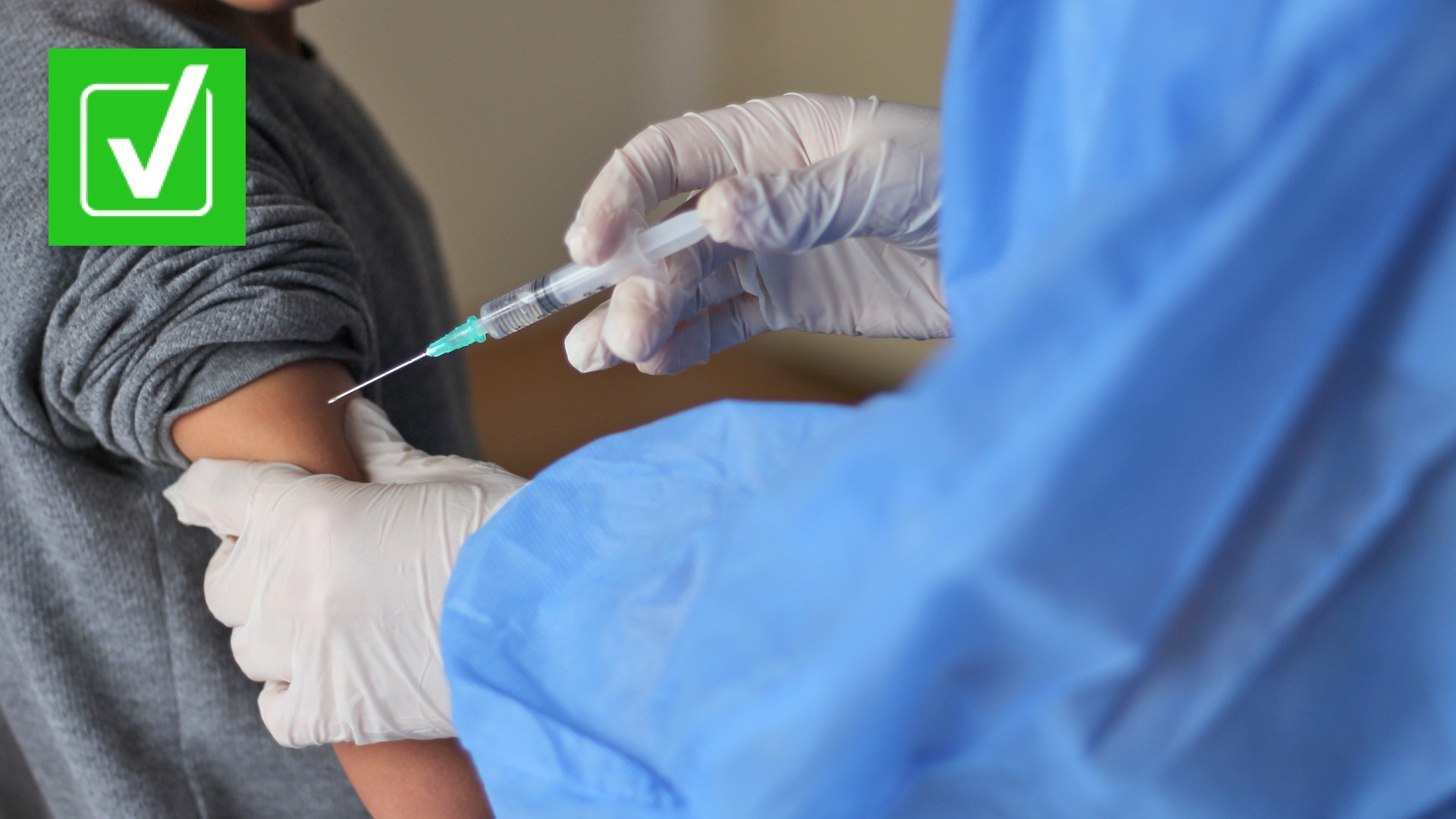JACKSONVILLE, Fla. — Cases of COVID-19 and RSV are on the rise nationwide, and with many children going back to school, do you know how to spot the difference?
Both illnesses can cause a runny nose, fever and cough but there are key differences you should be looking out for if your child comes home with the sniffles.
Babies and children with coronavirus often have mild symptoms, says WebMD. Some have no symptoms at all.
Young children, on the other hand, have more noticeable symptoms when they have RSV including appetite loss, sneezing, trouble breathing and crankiness, WedMD reports.
In rare cases, RSV can also lead to more serious problems like bronchiolitis and pneumonia among children.
Here's what you need to know.
What is RSV?
Respiratory syncytial virus, also known as RSV, is a very contagious virus that infects the respiratory tract of most children before their second birthday, says WebMD.
As pandemic restrictions begin to ease with more and more people getting vaccinated, doctors say they're seeing a spike. Doctors say it’s unusual for RSV cases to rise during this season, and that’s why we have to go back to the basics of good hygiene.
“As coronavirus infection went down, we are now seeing an increase in RSV infection, not just in Florida but in the Southern United States," says Dr. Mobeen Rathore, Chief of Infectious Disease at Wolfson Children’s Hospital.
Rathore says RSV is a respiratory virus that usually causes mild, cold-like symptoms, but RSV can be serious for infants or older adults.
Experts say you should call your child's doctor if you notice any of the following RSV symptoms:
- A high-pitched whistling or wheezing noise when they breathe
- Being unusually upset or inactive
- A cough with yellow, green, or gray mucus
- Trouble breathing or pauses in their breaths
- Refusing to breastfeed or bottle-feed
- Signs of dehydration: lack of tears when crying, little or no urine in their diaper for 6 hours, and cool, dry skin
If your baby is very tired, breathes rapidly, or has a blue tint to their lips or fingernails, call 911 or go to the ER immediately.
What does COVID-19 look like in children?
WedMD says that children who get COVID-19 appear to have less severe symptoms than with adults.
Research shows that over 90% of children who get sick have very mild to moderate cold-like symptoms that include:
- Fever
- Runny nose
- Cough
- Vomiting
- Diarrhea
However, this is not the case for every child and with the new delta variant, experts are seeing more child-to-child transmission.
A pediatrician explained to First Coast News that in the last two weeks, he has seen an increase in parents getting their children tested for coronavirus and those tests coming back positive.
Dr. Chris Emanuel with Baptist Pediatrics says in the pediatric COVID-19 cases he's seen the symptoms range from fever and cough to headaches.
He says thankfully, the majority of his patients have not been seriously ill, but when there is a COVID-19 positive diagnosis, there is concern for long-term effects of the virus.
"The kids that are having long-term issues, it is fatigue, the loss of taste or smell that sometimes lingers. They talk about a brain fog, please seem confused, less able to focus," tells Emanuel.
Bottom line?
Teach your children to practice good hygiene habits such as proper handwashing, and continue to encourage social distancing when appropriate.
Many experts also say mask wearing helps prevent the spread of coronavirus.
If your child feels ill, do not send them to school.

